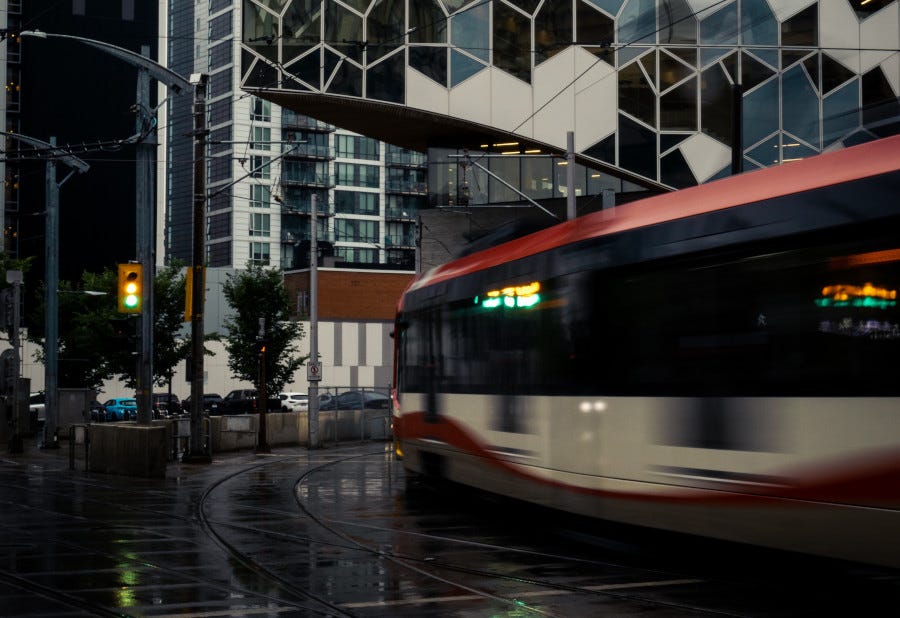More Neighbours, More Transit
The Calgary Housing Strategy can help make transit in Calgary more successful.
Howdy Neighbour!
September 14 is just two weeks away! We need your help to urge council to pass all 33 recommendations of the Housing Task Force as a key first step to avoiding following the unaffordable paths of Vancouver and Toronto.
As a reminder, these recommendations were initially voted down by council after attacks from anti-housing groups.
Let’s make sure they hear us loud and clear this time:
Share this newsletter with someone you know. We will be providing information and stories over the coming weeks about how you can get involved, what the recommendations mean, and why they are so important.
Join our Discord server, get involved in the conversation, and help us organize!
Write your city councillor and tell them about how important this vote is to you.
Speak up on September 14, online or in-person. We can help you to prepare your speaking notes and craft your 5-minute message. Just reach out in the Discord or email us at info@moreneighbourscalgary.ca.
You can find out more about helping out at all33.info.
Today we discuss how the recommendations connect with improved sustainable mobility for Calgarians.
More Neighbours, More Transit
Contributed by Rail for Alberta
It’s been 42 years since the Red Line LRT opened from Downtown to Anderson Station. In that time, millions and millions of Calgarians have been whisked into the city centre, and other quadrants of the city have been connected. One of the driving factors of success of our light rail system has been the dense concentration of jobs in the downtown core. What holds the system back is the low density land uses that surround our train stations and communities that they’re in.
Recommendation 2, Action A from the Calgary Housing Strategy reads as follows:
Make more land available to build more housing across the city: Dispose of City-owned lands as soon as possible within Transit Oriented Development sites suitable for housing, including non-market housing.
Transit-oriented development refers to an urban planning and design approach that focuses on creating communities that are easy and convenient to navigate by public transit. This means strategically locating residential, commercial, and recreational spaces near transit stations and making it easier for people to use trains and buses rather than relying so heavily on cars. Transit-oriented development has been a goal of the City of Calgary since the mid-1990s because it promotes more efficient and sustainable use of public infrastructure, reduces car-dependence and traffic congestion, while enhancing accessibility and overall livability.
And so it makes sense to build more housing around our LRT stations. Calgary currently has 45 LRT stations, with the Green Line adding 29 more once completed. The potential for these stations to support transit-oriented development is undeniable.
These locations can be developed into mixed-use communities that wouldn’t require the financial burden of vehicle dependency; after housing, transportation is typically the second largest expense for a household. Improving how we use land around our transit system is key to making sure these extra costs aren’t incurred on people who are already struggling with housing. Transit works best when communities are denser and more diverse.
Heritage LRT Station, room for more neighbours!
While the CTrain has been a success story in terms of ridership, the development and land use story has been a very different tale. While Tokyo builds office complexes above their stations and Vancouver creates high density neighbourhoods, Calgary has built parking lots. This inefficient use of land around train stations is bad for housing, bad for taxes and bad for transportation. These areas should become our local town centres that attract jobs, residents and a sense of place for Calgarians. Enabling people to use our transit system to reach places outside of downtown is crucial to making sure these infrastructure investments are worth their costs.
Mass transit needs the masses. Without more homes near transit it’s difficult to justify expanding our transit system and in return we saddle our city with the high costs of personal vehicle dependency. If we want our public transportation system to be successful and cost effective, we need a critical mass of people in the areas they serve. Low density sprawl doesn’t deliver a good enough return on our transportation finances.
Calgary’s Housing Task Force is a good first step to better transit and a better Calgary.





